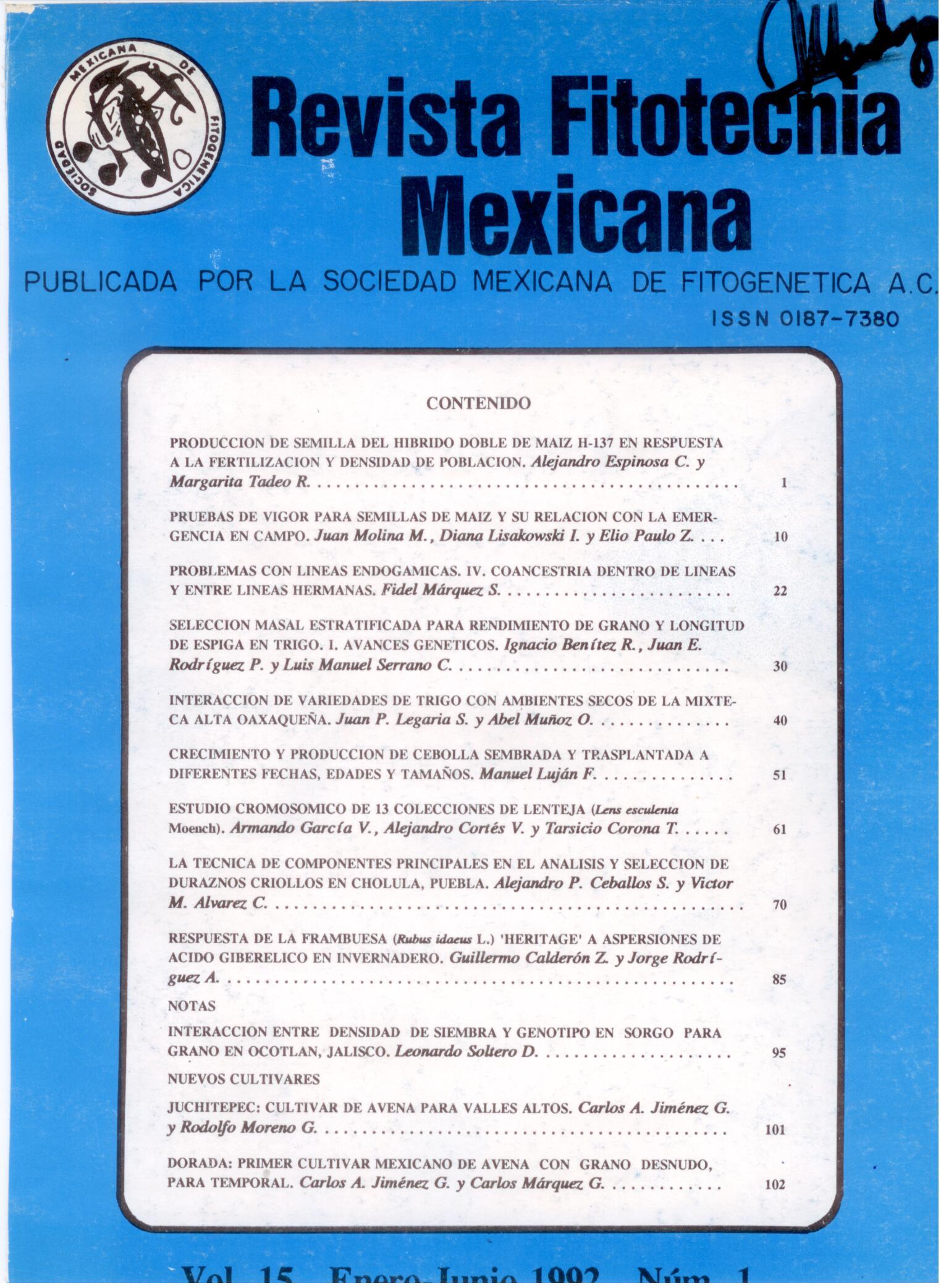JUCHITEPEC: CULTIVATING OATS FOR HIGH VALLEYS
Main Article Content
Abstract
The oat cultivar (Avena sativa L.) 'Juchitepec' was formed in the INIFAP Experimental Fields, from 1978 to 1982; From 1982 to 1988, performance evaluations were carried out in several locations. After crossing, the management of segregating populations was done with the pedigree method. Individual selection was practiced up to F6, where it was mass selected to proceed to the preliminary performance test. The cross involved parents with high grain yield and resistance to stem rust caused by Puccinia graminis Avenae and their selection history is: T-3058-5R-3C-CE-OE. This cultivar is characterized by having soft "mustard" yellow stems at maturity; medium-sized leaves, 1.5 to 2.5 cm wide, glabrous and with a dark green ligule at flowering. Its panicle is compact equilateral and the spikelets are separated by fracture. The grain is short and thick with few hairs on the callus and has ridges on the primary grain.The most important agronomic characteristics of Juchitepec are: The juvenile growth habit is semi-erect, it is a spring variety that presents 50% flowering at 55 days and reaches its physiological maturity at 110 days under the conditions of the Valley of Mexico, in seasonal sowing. It has moderate resistance to lodging and shelling; under these Under the same conditions, its reaction to stem rust, which is the most important disease of this cereal in Mexico, is moderate susceptibility. Compared with the 'Tulancingo' cultivar, as a control, and based on data from six evaluation cycles in four locations, the grain yield of Juchitepec was 38% higher. Its greatest potential was presented in the town of Juchitepec, Edo. of Mexico, which has an altitude close to 2,500 meters above sea level and favorable rainfall throughout the entire growing cycle (greater than 400 mm). Due to the above, it is considered that under these conditions it exceeds 4,000 kg ha-1 of grain; For this reason, it can be said that Among the early varieties released in Mexico to date, it is the one with the greatest yield potential. The quality of Juchitepec grain, from an industrial point of view, is acceptable and superior to that of Tulancingo. It has a percentage of usable grain of 75.42, a weight of 1,000 grains of 22.31 g and its protein percentage is 21.0 (dry basis). This cultivar was registered and released in 1991, with code AVE-090491-009, before the National Registry of Plant Varieties.

